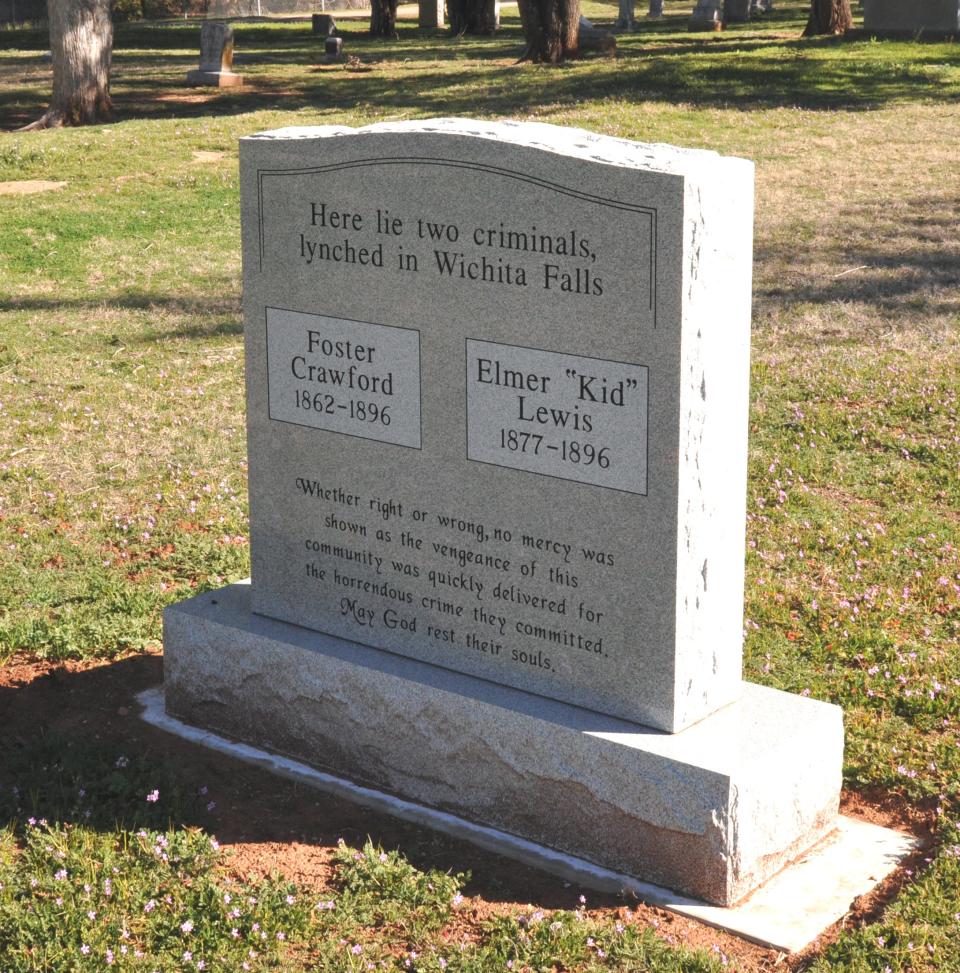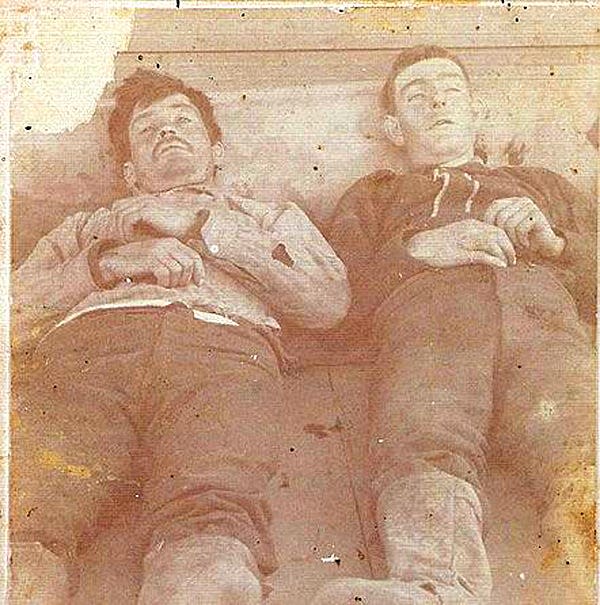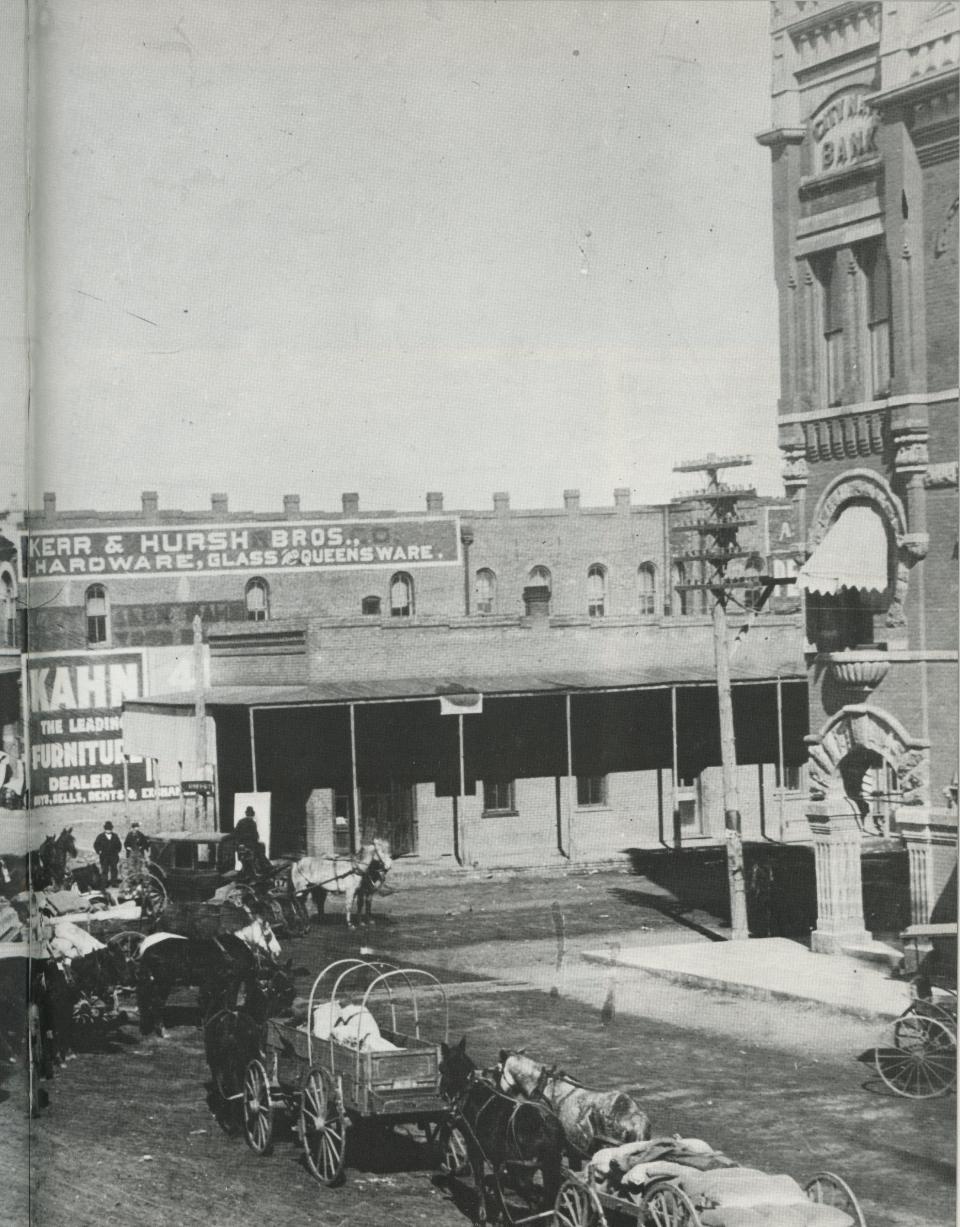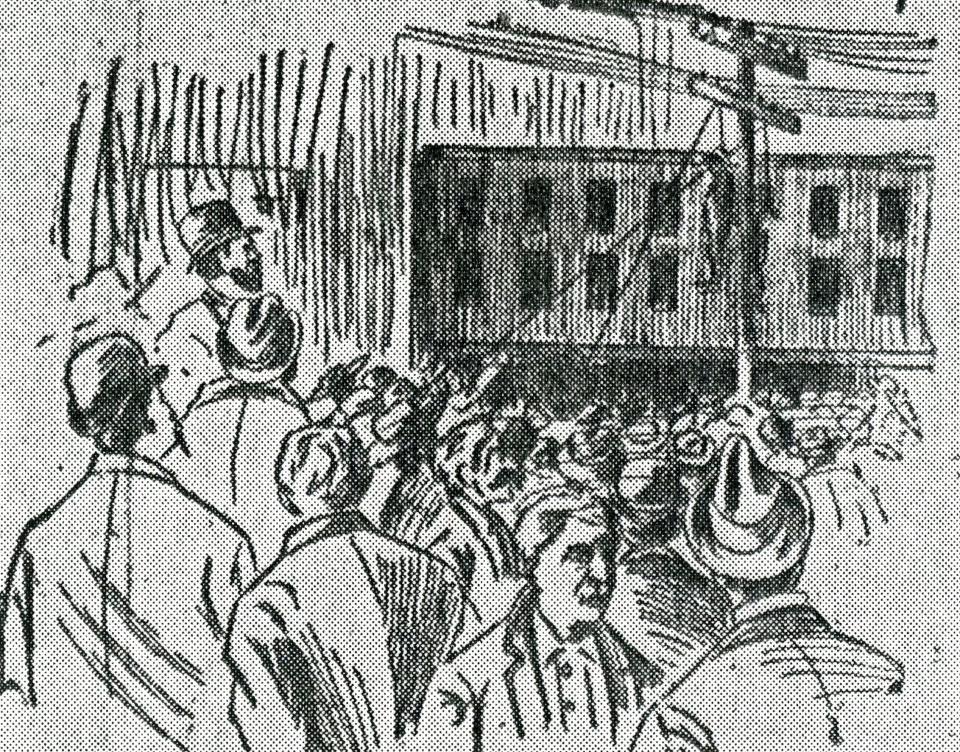New monument at Riverside Cemetery memorializes infamous bank robbers
A new monument at Riverside Cemetery memorializes two robbers who held up City National Bank in Wichita Falls and killed the cashier.
This week marks the 128th anniversary of the event which has become the city’s most notorious tale from its Old West days.

Elmer “Kid” Lewis and Foster Crawford were hands at the Burk Burnett ranch when they decided to rob the bank, which at that time was located on the corner of Seventh Street and Ohio Avenue.
Rumor had spread the bank kept up to $500,000 in cash on hand and was prime pickings for a holdup. To guard against that, bank president Joseph A. Kemp summoned a contingent of 10 Texas Rangers led by Capt. Bill McDonald. After days passed and nothing happened, the Rangers packed up and headed back to Fort Worth on Feb. 25, 1896. Lewis and Crawford, fortified by liquor, were at the train station to wave goodbye.

Then the two men entered the bank. Crawford smacked teller P.P. Langford on the head, Lewis shot cashier Frank Dorsey and fired a shot at Dr. O.J. Kendall, whose life was saved when the bullet struck a syringe in his vest pocket. Lewis shot Langford in the buttocks as he fled, but the teller managed to crawl out and sound the alarm. Crawford scooped up $410 in loot and engaged in a brief shootout with deputy Frank Hardesty as the bandits fled. Angry citizens were soon in hot pursuit.

Meanwhile, the Rangers got word of the robbery by telegraph at Bellevue and caught the next train back to Wichita Falls. Those lawmen and a crowd motivated by outrage and the promise of a reward offered by Kemp, surrounded the bandits near the Red River. Capt. McDonald negotiated their surrender in exchange for promising their safety from the crowd. The two men were tucked into the jail that was located then on the northeast corner of the present courthouse grounds, where residents, including school children, came through the night to gawk at them.
Cashier Dorsey died from his wounds and his funeral the next day raised the ire of an already-incensed citizenry.

Sensing a lynching was in the making, Capt. McDonald and his Rangers caught a train out of town. Although they were present for neither the robbery nor the subsequent lynching, the men were paid $800 from the reward money.
Rather than curious schoolchildren, irate townspeople arrived at the jail that night to batter down the door and hustle the robbers to Seventh and Ohio where a bonfire lit the night around the bank building.
Crawford asked for whiskey from his old boss, Burk Burnett, and then passed out. Men tossed ropes over the arm of a newfangled telephone pole, put nooses around the necks of the robbers, and strung them up.
They swung until dawn and then were posed on a porch for a final photograph. Lewis’ father wired authorities requesting a casket for his son, but later refused to pay for it. Nobody requested a casket for Crawford, so he was put into the crate Lewis’ casket had been shipped in.
The men were buried in a single grave in a portion of Riverside Cemetery that was then reserved for paupers. A mystery woman placed flowers at the site for many years.
A wooden marker was the first of several placed at the gravesite until a small stone marker was placed in 1958.
The new monument, erected in December by Friends of Riverside Cemetery, reads in part, “Whether right or wrong, no mercy was shown as the vengeance of this community was quickly delivered for the horrendous crime they committed.”
Four men were indicted for their roles in the lynching, including Deputy Hardesty, who was accused of not guarding the men’s cell vigorously after his pocket watch had defelcted a bullet fired by Crawford. The indicted men’s trials were moved to other towns, but no records exist that they ever took place.
Rhea Howard, longtime publisher of the Times Record News, left a handwritten note identifying all the men involved in stringing up the killers. That note resides today in the Wichita County Archives.
A Texas historical marker recognizing the robbery and lynching was placed on the City National Bank after it was moved to Eighth Street, although it was not the site of the event and is no longer a bank.
The actual site of the lynching has no marker, is no longer a bank, but instead is near Gidget’s Sandwich Shop.
This article originally appeared on Wichita Falls Times Record News: New monument at Riverside Cemetery memorializes infamous bank robbers

